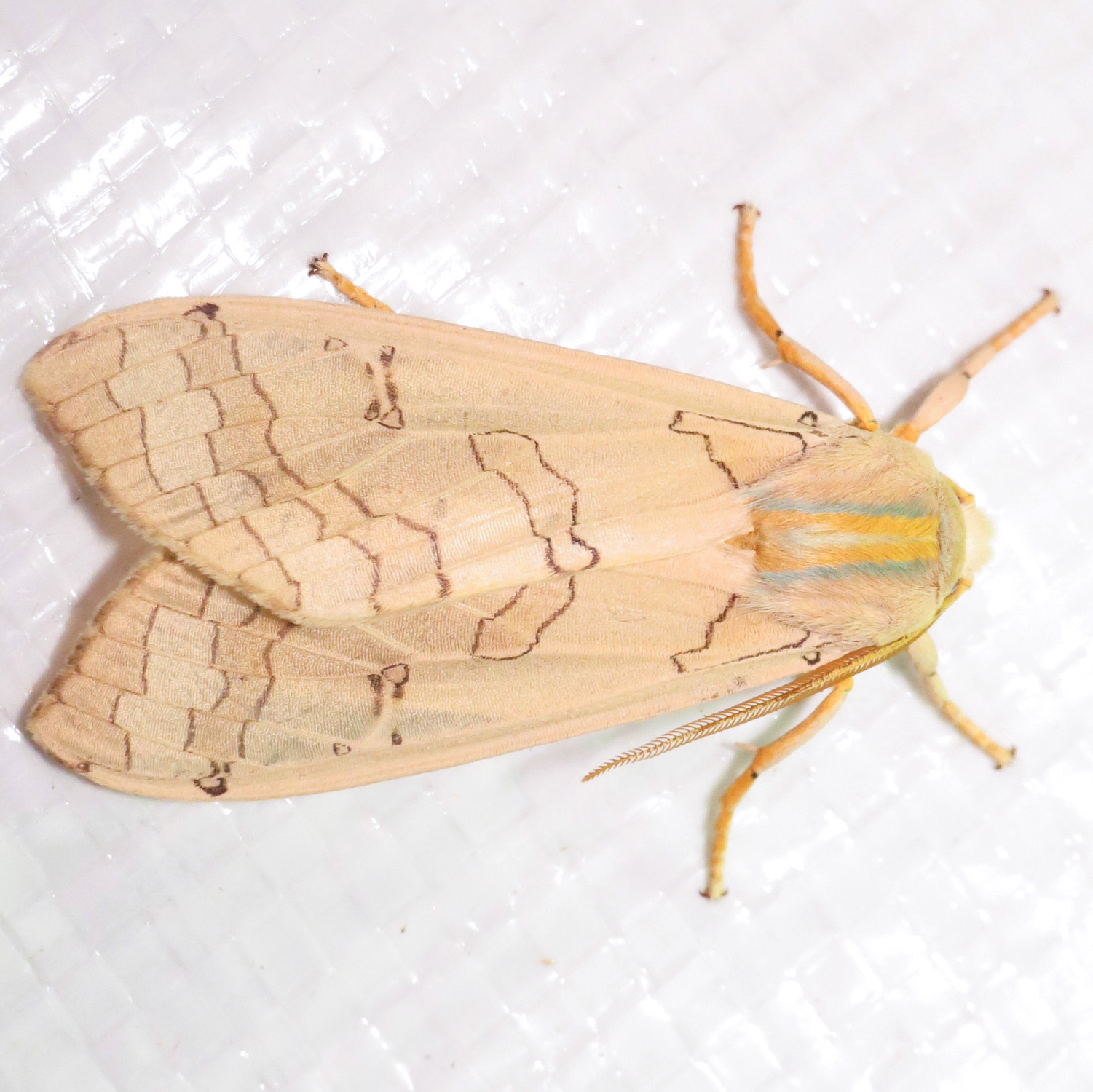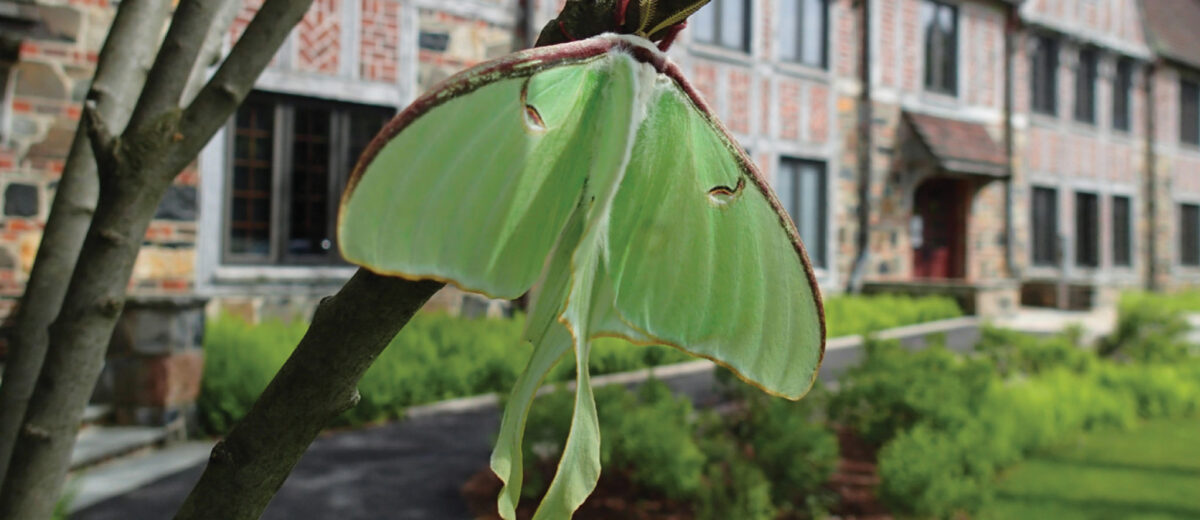by Kyle Lima

Across Mount Desert Island, 467 species of butterflies and moths (Lepidoptera) have been documented by users of iNaturalist, an online platform of biodiversity observations that anyone can contribute to. To submit an observation, you take a photo and upload it either on the app or website. Other contributors and experts then help confirm the identification of what you saw. This platform curates this expansive biodiversity database which Schoodic Institute and many other scientists use to help understand where species are, how things are changing, and more.
Out of those 467 species of Lepidoptera documented via iNaturalist, 88 percent are moths! There have been more than 2,300 observations of moths on Mount Desert Island, with the most commonly reported species being the conifer swift moth (Korscheltellus gracilis) and luna moth (Actias luna). Moths often don’t get the same appreciation as their more showy counterparts, the butterflies, however they are crucial pollinators, great indicators of rapid environmental change, and important food sources for many other animals. We also don’t know much about moths compared to other groups of animals, and National Moth Week, happening now, is one amazing global citizen science project that helps us fill these gaps.
One place on Mount Desert Island that is of great interest to scientists at Schoodic Institute and Acadia National Park managers is Great Meadow. This wetland is a diverse area of the park that the National Park Service is working to restore through partnership with Wabanaki leaders, Friends of Acadia, and Schoodic Institute. In this critical meadow alone, users have recorded 13% of all moth species documented on Mount Desert Island through iNaturalist. This includes seven species of moth that have only been recorded in Great Meadow, and nowhere else on the island. You can explore more about these species by clicking the link next to the species name:
- Wavy-lined Emerald (Synchlora aerata) – link
- Early Button Slug Moth (Tortricidia testacea) – link
- Newman’s Mathildana Moth (Mathildana newmanella) – link
- Rose Plume Moth (Cnaemidophorus rhododactyla) – link
- Elm Spanworm Moth (Ennomos subsignaria) – link
- Smeared Dagger (Acronicta oblinita) – link
- Carmenta corni – link
This Moth Week (July 20-28), consider joining the 720 iNaturalist users who have contributed observations of moths in Acadia and help us better understand these understudied and beautiful organisms!
